When the ruins of Pompeii and Herculaneum, the two ancient Roman towns that were destroyed by the eruption of Mount Vesuvius, were rediscovered, it inspired artists in other parts of Europe.
Johann Joachim Winckelmann (1717-1768) wrote his book “History of Ancient Art” in 1764, the Neoclassical art movement emerged with Neoclassical artists deriving inspiration from ancient Greek and Roman art.
This was a period in which Baroque artists and later Rococo artists were favored, especially at the French court. In the visual arts, dramatic Baroque paintings and theatrical Rococo paintings were gradually replaced by the austere art inspired by classical antiquity.
Let’s take a closer look at some of the most famous Neoclassical paintings, artworks that define this art movement of the late 18th and 19th centuries.
1. Oath of the Horatii – Jacques-Louis David
- Date created: 1784
- Dimensions: 329.8 × 424.8 centimeters (129.8 × 167.2 inches)
- Location: Louvre Museum, Paris, France
Oath of the Horatii is arguably one of the most famous Neoclassical paintings ever produced. It was painted by Jacques Louis David (1748-1825), the leading Neoclassical artist of the late 18th and early 19th centuries. It’s one of the artist’s best-known works.
It depicts the moment when three brothers of the Roman Horatii family make an oath to their father just before they leave for battle. The setting is 7th-century B.C. Rome and only one brother will survive the clash against 3 warriors from Alba Longa.
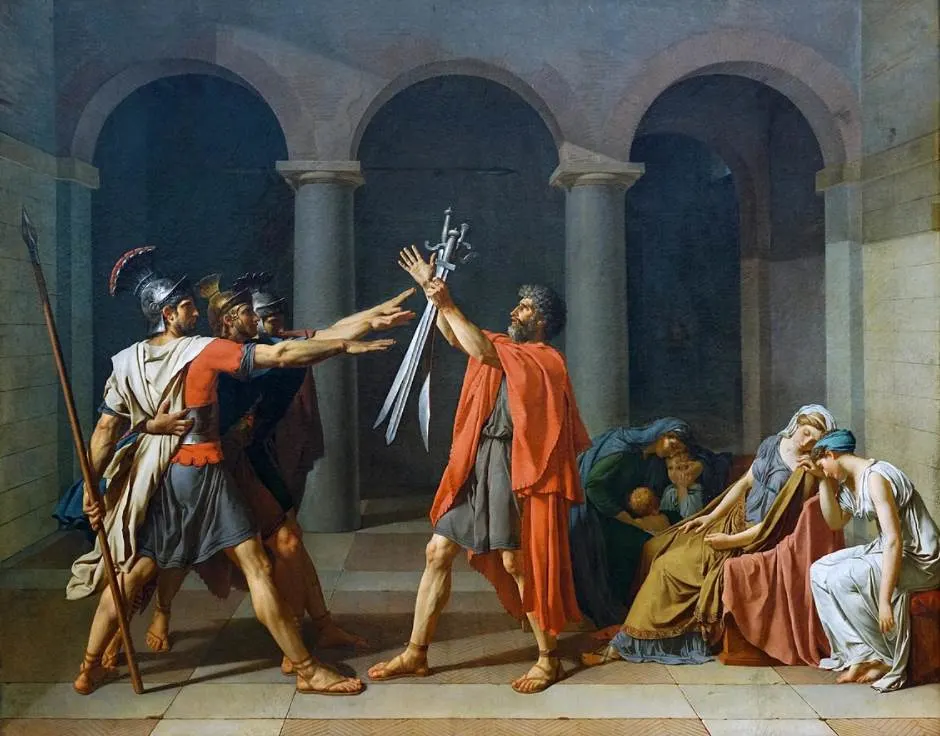
2. Grande Odalisque – Jean-Auguste-Dominique Ingres
- Date created: 1814
- Dimensions: 88.9 × 162.56 centimeters (35 × 64 inches)
- Location: Louvre Museum, Paris, France
Grande Odalisque or “La Grande Odalisque” is one of the most famous works of the French artist of the Neoclassical period Jean-Auguste-Dominique Ingres (1780-1867). He was a generation younger than David and often leaned toward Romanticism.
This notion is emphasized by this painting which resembles the paintings of Romantic artists who were inspired by exotic influences. Despite being one of his most famous works, it was heavily criticized because of the unrealistic depiction of the woman.
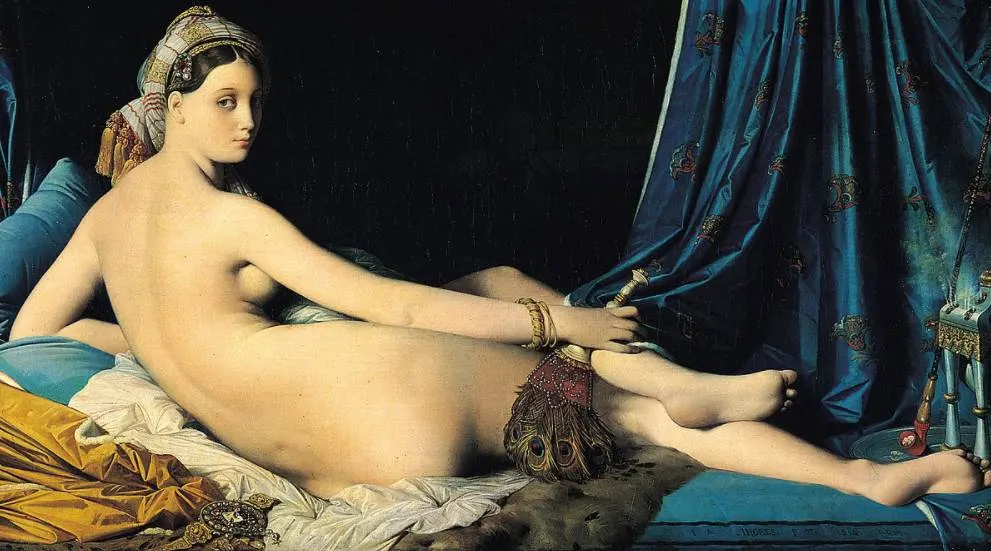
3. Nymphs and Satyr – William-Adolphe Bouguereau
- Date created: 1873
- Dimensions: 260 × 180 centimeters (100 × 71 inches)
- Location: Clark Art Institute, Williamstown, United States
Nymphs and Satyr is an amazing painting produced by academic painter William-Adolphe Bouguereau (1825-1905). This French painter combined the ideals of 19th-century Realism artists with mythological and classical subjects.

This painting depicts nymphs who appear to be attacking a satyr after he has spotted them bathing. Some of the nymphs can be seen in the background. The painting was bought for the hefty sum of 35,000 francs the year it was completed and brought to the US shortly after.
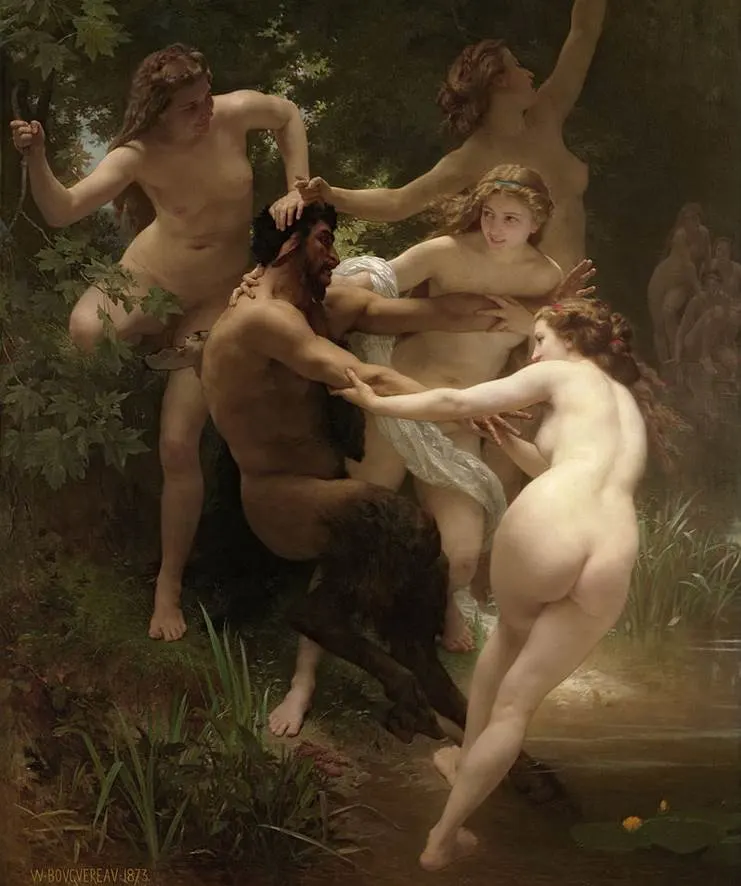
4. The Death of Socrates – Jacques-Louis David
- Date created: 1787
- Dimensions: 129.5 × 196.2 centimeters (51 × 77.2 inches)
- Location: MET Museum, New York City, United States
The Death of Socrates is another masterpiece by Jacques-Louis David which depicts a story from antiquity. We can see Socrates just before he is scheduled to be executed by drinking poison hemlock.
He was sentenced to death for allegedly “corrupting” the youth of Athens” with his novel philosophical theories. Socrates is depicted calmly among his followers and can be seen delivering one final speech.
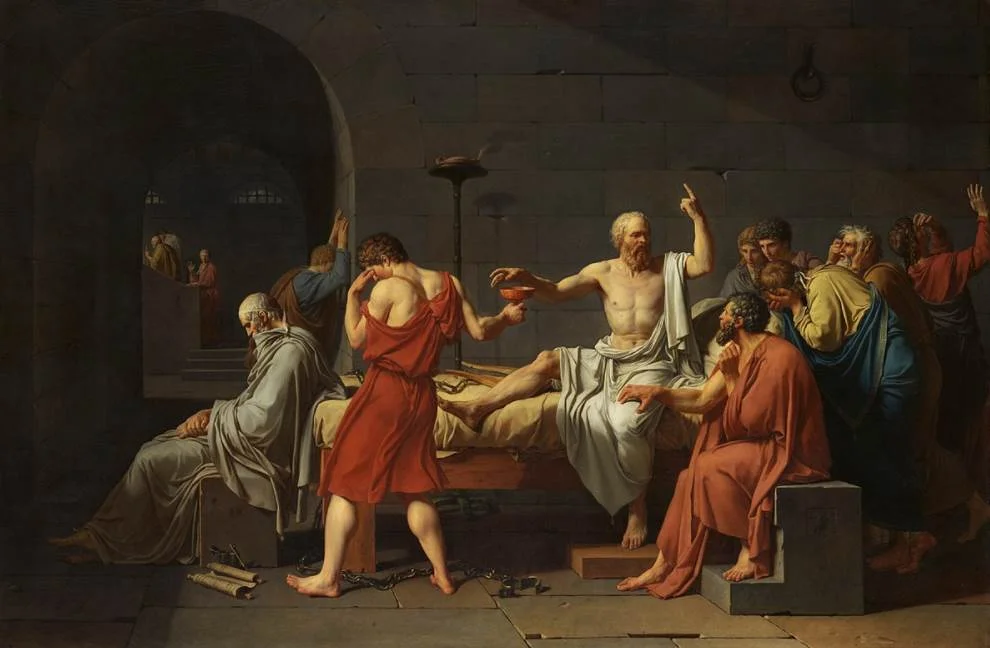
5. The Sorrow of Telemachus – Angelica Kauffman
- Date created: 1783
- Dimensions: 83.2 × 114.3 centimeters (32.8 x 45 inches)
- Location: MET Museum, New York City, United States
The Sorrow of Telemachus is one of the best-known works in the oeuvre of Swiss Neoclassical painter Angelica Kauffman (1741-1807). Despite being a Swiss national, she spent most of her career in London and Rome.
This painting of the renowned Swiss artist depicts a scene derived from the French novel called “The Adventures of Telemachus,” a book that was published in 1699. In Greek Mythology, Telemachus was the son of Odysseus, the Greek hero from Homer’s famous “Odyssey”

6. Napoleon I on His Imperial Throne – Jean-Auguste-Dominique Ingres
- Date created: 1806
- Dimensions: 259 × 162 centimeters (102 × 64 inches)
- Location: Musée de l’Armée, Paris, France
Napoleon I on His Imperial Throne is another renowned work of art created by Jean-Auguste-Dominique Ingres. It depicts the French Emperor Napoleon Bonaparte on his throne after his coronation.
Napoleon is depicted wearing the clothes and ornaments he wore during his coronation event on December 2, 1804. The painting was exhibited at the Paris Salon of 1806 with the title “His Majesty the Emperor on his throne.”
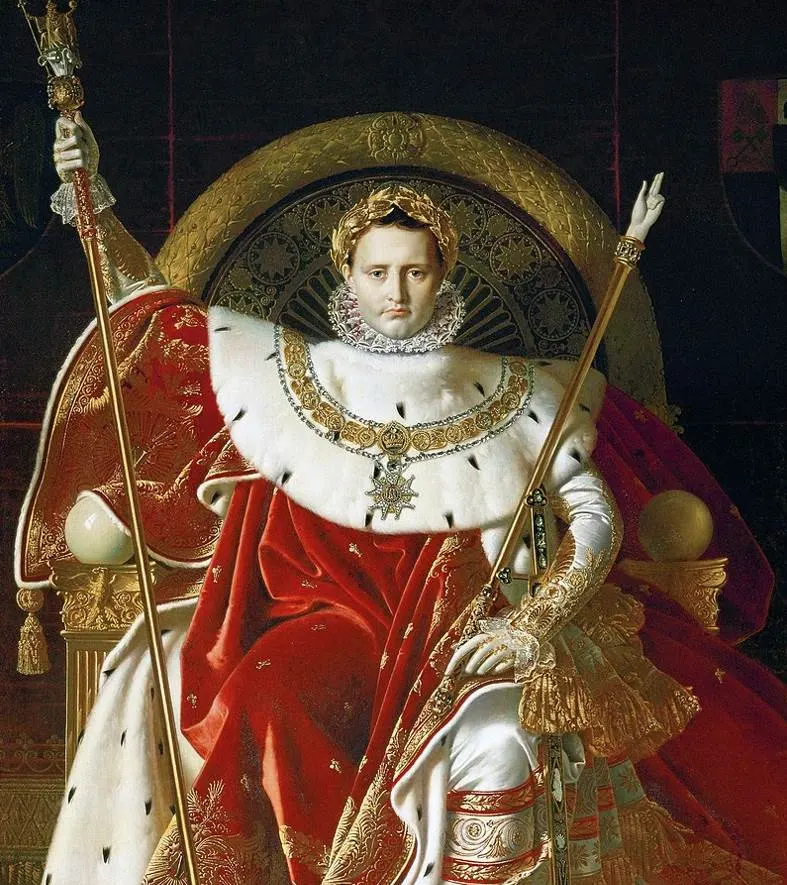
7. The Death of Marat – Jacques-Louis David
- Date created: 1793
- Dimensions: 162 × 128 centimeters (64 × 50 inches)
- Location: Royal Museums of Fine Arts, Brussels, Belgium
The Death of Marat is a painting produced by Jacques-Louis at the height of the French Revolution, just over a decade before Napoleon was crowned to become Emperor of the French. It depicts French political agitator Jean-Paul Marat shortly after his assassination.
Marat was murdered by a supporter of the Girondins, a woman named Charlotte Corday. Marat was the leader of the Jacobins and although he was admired by David, has been blamed for the dramatic radicalization of the Revolution, resulting in the bloodbath called the “Reign of Terror.”

8. Mischief and Repose – John William Godward
- Date created: 1909
- Dimensions: 60.6 × 133 centimeters (23.9 × 52.4 inches)
- Location: Getty Museum, Los Angeles, United States
Mischief and Repose is a series of paintings created by famous English artist John William Godward (1861-1922), a man who painted in the Neoclassical style at a time when the style was actually out of favor because of the rise of various modern art movements.
The first painting in the series was produced in 1895, followed by two smaller works in 1909. These are allegorical works with two female figures representing “Mischief,” the kneeling woman, and “Repose,” the woman lying down.
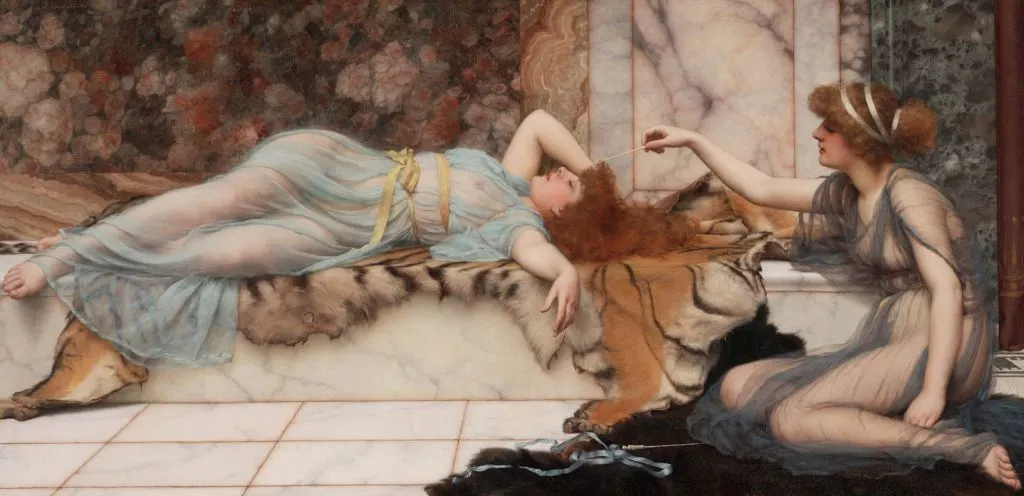
9. The Coronation of Napoleon – Jacques-Louis David
- Date created: 1805-1807
- Dimensions: 621 × 979 centimeters (244.48 × 385.42 inches)
- Location: Louvre Museum, Paris, France
The Coronation of Napoleon depicts the actual event of Napoleon Bonaparte being crowned as French Emperor. Although the painting was only completed in 1807, it’s a pretty accurate depiction because Jacques-Louis David was present during the ceremony.
Napoleon is the central figure in this monumental work of art which is nearly 10 meters (33 feet) wide. He can be seen holding his crown in the air as if he is about to put it on his head. A decade later, the French Emperor would fall after numerous wars all across Europe.
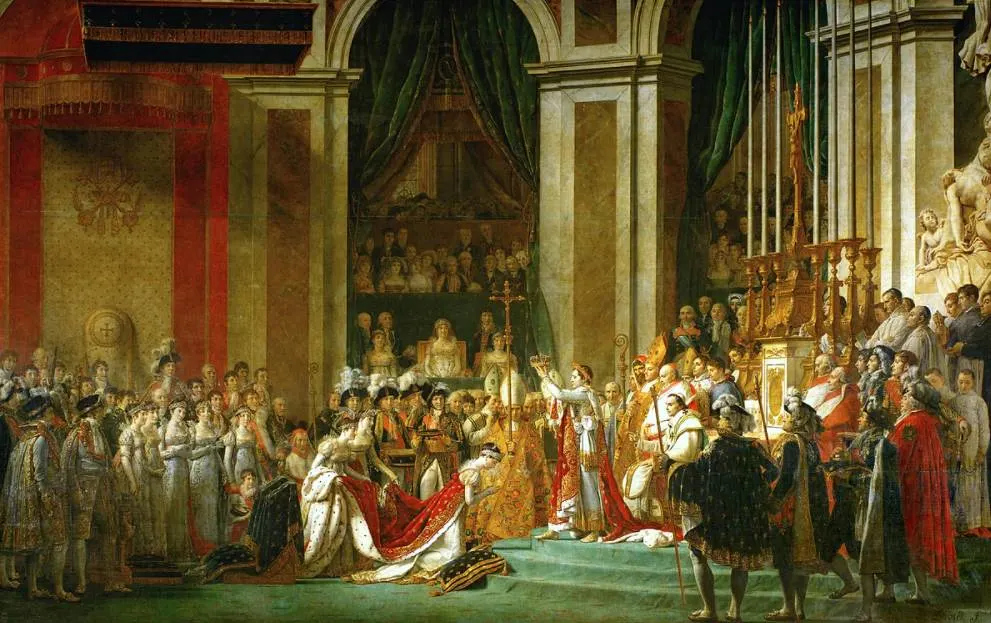
10. The Intervention of the Sabine Women – Jacques-Louis David
- Date created: 1799
- Dimensions: 385 × 522 centimeters (152 × 206 inches)
- Location: Louvre Museum, Paris, France
The Intervention of the Sabine Women is a painting that depicts a story shortly after Rome was founded known as the “Abduction of the Sabine Women.” The young men of the newly established civilization abducted young women from cities in the region.
This particular story has been very popular with both painters and sculptors ever since the Renaissance. The central figure in the work is Hersilia, the wife of Romulus and the daughter of Titus Tatius, the leader of the Sabines. She is credited with ending the war between Rome and the Sabines.
